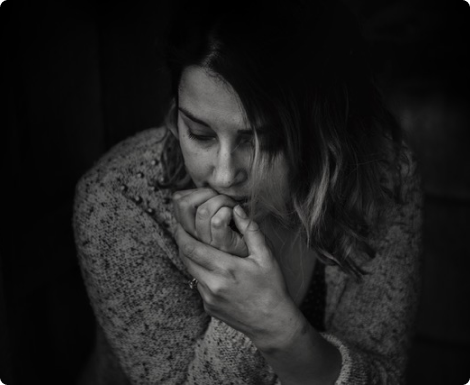Symptoms

Depression
Depression is a psychological illness caused by a series of mental disorders that can have numerous origins., from physical to social problems. For many people it is difficult to even call it a disease, when there is no physical evidence or tests to help diagnose it. Although, depression can cause a number of chemical changes in the brain. the fact we don't see it, doesn't, scientifically mean that those changes do not exist.. Crises may be associated with external circumstances. Stress, for example, can cause depressive symptoms in an already predisposed person.
There are other possible causes of depression, such as metabolic or hormonal imbalances, environments with constant competition, lack of affection and empathy between people. Individuals who face traumas in life, such as mourning, unemployment or illness, are also more likely to develop the condition. Therefore, it is the result of a complex interaction between social,, psychological and biological facts..
Today there are more than 300 million people worldwide diagnosed with depressive disorders, according to estimations made by the World Health Organization (WHO). The first step is to recognize the symptoms..

Most common symptoms of depression:
- Constant presence of negative thoughts
- Guilt
- Feeling of being useless
- Low self esteem
- Sadness
- Decreased pleasure and mood for everyday activities
- Lack of purpose
- Deep void
- Peaks of aggression and irritability
- Isolation

Anxiety
It is a disorder characterized by “excessive worry or apprehensive expectation”, persistent and difficult to control, that lasts for at least six months and may be accompanied by other symptoms. It can manifest as of 6 years-old and remain in adulthood, varying symptoms from one person to another. It is a characteristic of people who have a very busy life., who are under continuous stress or who tend to pay close attention to the smallest details.
The treatment, sometimes, includes the use of antidepressant medications, under medical advice. Behavioral therapy is a great form of treatment, activities that promote relaxation are recommended, like meditation, yoga, tai chi cuan, handmade activities, learning an instrument, arts and physical activity.

Most common symptoms of anxiety:
- Generalized fear
- Restlessness
- Apprehension
- Difficulty of concentrating
- Tachycardia and shortness of breath
- Insomnia
- Excessive worry
- Nervousness
- Chest and body pain
- Cold sweat

Borderline Personality Disorder
Borderline personality disorder (BPD) is a serious and complex mental condition. Individuals with BPD are especially characterized by experiencing great emotional instability, excessive affective dysregulation, intense and polarized feelings, among others, that often generate dangerous impulsive behaviors directed against themselves. The recurrent presence of self-injurious acts is common, as well as suicide attempts and deep feelings of emptiness and boredom. The onnset of the disorder may occur in adolescence or adulthood, and psychological and/or psychiatric treatment is essential for these people.
People with BPD are real volcanoes ready to explode. They have sudden and expressive mood changes and their interpersonal relationships are intense and unstable., which sometimes makes it difficult to have close contact with them..
One word misplaced, an unexpected situation without relevance or a slight frustration can lead the borderline to a fit of anger and hate that lasts on average a few hours. It is common for them to abandon or destroy their goals and targets just when the prospect of achieving them is real and close..

- Desperate efforts to avoid real or imagined abandonment
- Pattern of unstable and intense interpersonal relationships, characterized by the alternation between extremes of idealization and devaluation
- identity disorder: marked and persistent instability of self-image or self-perception
- Impulsivity in at least two potentially self-destructive areas (expenses, sex, substance abuse, irresponsible driving, binge eating)
- Recurrence of suicidal, behavior, gestures or threats or self-mutilating behavior
- Affective instability due to marked mood reactivity (episodic dysphoria, intense irritability or anxiety lasting usually for a few hours and only rarely for more than a few days)
- Chronic feelings of emptiness
- Intense, inappropriate anger or difficulty controlling it (frequent shows of irritation, constant anger, recurring physical fights)
- Transient paranoid ideation associated with stress or intense dissociative symptoms.
Treatments

Although science hasn't found a cure for the most serious psychological disorders, whenever the person has very distressing symptoms and/or reactions that could affect or harm themselves or others, they should seek psychological/psychiatric care.
The same occurs when there is suicidal intent or even attempt. In those cases, It is important that the family and, mainly, professionals are aware of these thoughts so that they can help. Sometimes, both the person and family members are very frightened, but experts understand this situation well and will know how to deal with it.
Treatment should be complemented with integrative practices/therapies, that help the person to find internal balance and better quality of life. This is the work that the NGO Espaço SER – Casa Matheus Campos promotes with excellence.





